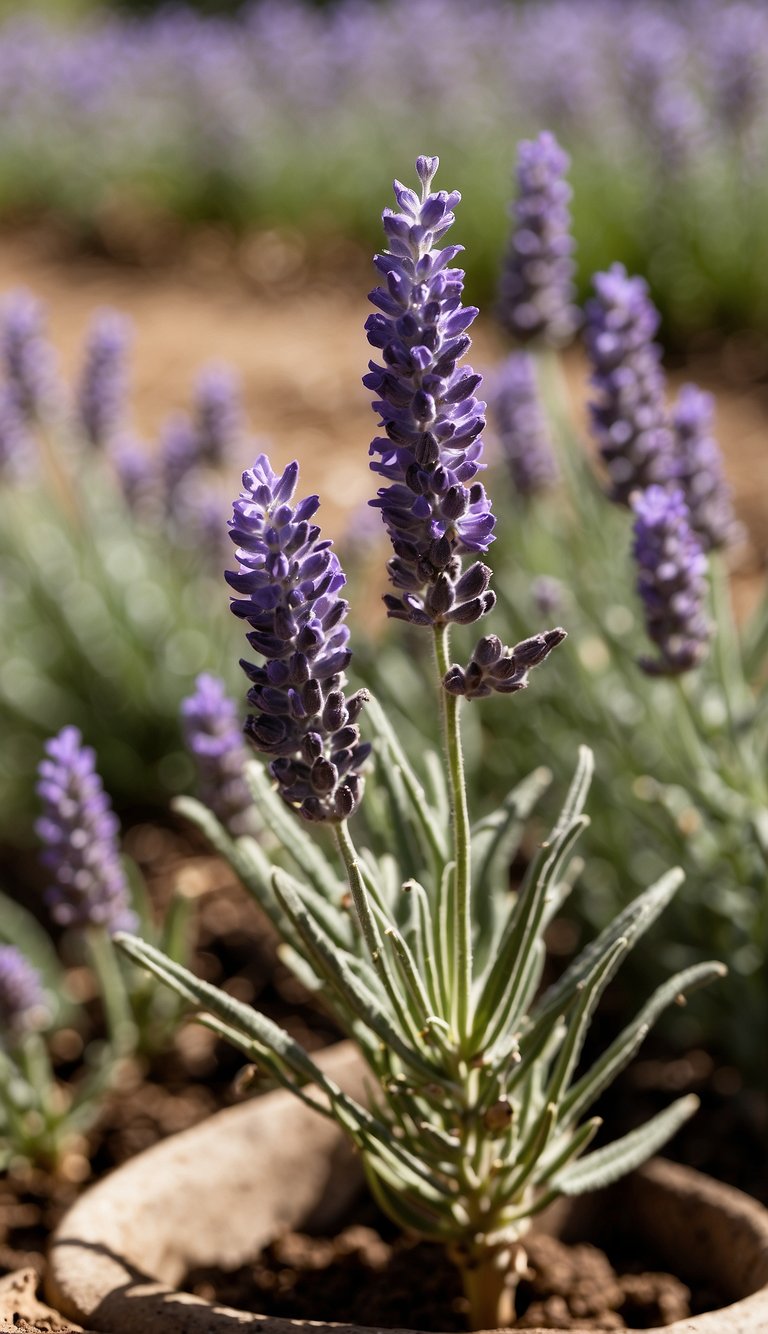Lavender is a perennial plant known for its aromatic flowers and silvery-green foliage, favored in gardens and landscapes for its beauty and its multitude of uses.
Proper care can ensure healthy growth and a plentiful harvest of blooms that can be used for everything from culinary recipes to aromatherapeutic remedies.
Understanding the specific prerequisites and maintenance of lavender is key to successful cultivation.

Growing lavender requires attention to soil conditions, watering habits, and harvesting techniques.
The plant thrives in well-drained soil and full sun, making it an excellent candidate for rock gardens and other drought-resistant landscapes.
Regular pruning not only helps maintain its shape but also encourages the growth of fresh flowers.
Key Takeaways
- Lavender requires well-drained soil and full sunlight.
- Proper pruning promotes healthy growth and flowering.
- Consistent care yields multiple uses from harvested lavender.
Lavender Plant Care: A Complete Guide
To ensure the health and longevity of lavender plants, one must consider critical factors such as soil quality, sunlight, and proper pruning techniques.
These vital points lay the groundwork for a thriving plant.
Essential Tips for Caring
Lavender plants thrive in well-drained soil and require ample sunlight. For optimal growth, they should receive at least six hours of sunlight each day.
It’s important to water them deeply but infrequently, allowing the soil to dry out between watering sessions.
Taking Care: Dos and Don’ts
- Do plant lavender in a spot with full sun and good air circulation.
- Don’t overwater, as this can lead to root rot.
- Do prune annually for shape and to promote new growth.
- Don’t fertilize excessively, as lavender prefers lean soil.
Outdoor Care Made Easy
When planting outdoors, choose a location that shields lavender from strong winds.
Consider adding gravel or sand to the soil to improve the drainage, which is critical for prevention of root rot.
In colder climates, provide a layer of mulch to insulate the roots during winter.
Mastering the Art
Pruning is an art that can encourage fuller plants and prevent woodiness.
Cutting back lavender in the spring, after new growth appears, stimulates healthy new stems while keeping the plant’s size in check.
Expert Advice
Experts recommend drying the lavender by hanging bundles in a cool, dark place with good air circulation.
This process typically takes a few weeks, after which the dried flowers can be stored or used to create aromatic sachets or culinary delights.
The Ultimate Guide
For the best soil conditions, one should improve drainage if needed and keep the plants away from shaded areas.
Lavender plants often prefer slightly sandy, nutrient-poor soil, which mimics their native Mediterranean environment.
Simple Steps to Care
- Plant lavender in spring, post-frost, and in warm soil.
- Ensure full sun and good drainage.
- Space plants to allow for growth and airflow.
- Water deeply but infrequently.
- Prune annually to maintain shape and health.
Frequently Asked Questions
Lavender care necessitates attention to soil quality, pruning practices, and sunlight exposure.
These frequently asked questions aim to address common concerns for optimal growth and maintenance of lavender plants.
How should lavender in pots be maintained?
Potted lavender requires well-draining soil and adequate space for roots to grow.
It’s crucial to choose containers with drainage holes to prevent waterlogging, which can lead to root rot. Maintaining the right soil moisture balance is key.
What is the correct method to prune lavender?
Pruning is essential to maintain the plant’s shape and promote healthy growth.
After flowering, trimming back the spent blooms and about a third of the plant’s new growth encourages new shoots, while avoiding cutting into the old wood.
What considerations are there for caring for lavender plants indoors?
Indoor lavender plants need a location that receives plenty of sunlight, at least six hours a day, and good air circulation.
One must avoid overwatering to prevent fungal diseases, a common issue with indoor lavender.
What special care does lavender require during the winter season?
During winter, outdoor lavender should be shielded from excessive moisture.
Mulching with materials such as gravel can help improve drainage and prevent root rot in regions with cold, wet winters.
How does one ensure the successful spread of lavender in the garden?
To encourage lavender to spread, planting in a sunny spot, ensuring proper spacing for air movement, and regular pruning are important steps. These practices help the plants to thrive and multiply.
Is direct sunlight necessary for the growth of lavender plants?
Full sun is essential for lavender plants as it fosters robust growth and optimal blooming. They require at least six hours of direct sunlight per day.

A passionate gardener and founder of ForTheLoveOfGardeners.com. She shares her expertise to help you cultivate thriving gardens and find joy in the beauty of nature.

